Published Date: Sep 29, 2025
Written by: Emma Cyrus, Senior Copy, Content & Editorial Writer
Reviewed by: Saran Razzaq, Senior Interior Designer at FCI London
Edited by: Zoona Sikander, Head of Content
Estimated Reading Time: 15 minutes
TLDR: When selecting materials for luxury built-in wardrobes, the choice between solid wood, veneers, laminates, glass, and metal significantly impacts both aesthetics and functionality. Solid wood offers unparalleled durability and timeless elegance, but at a premium price, while quality veneers provide an authentic wood appearance at a more accessible investment level. Laminates deliver remarkable durability with minimal maintenance requirements, making them rather practical for busy households. For truly distinctive wardrobes, materials like frosted glass, mirrors, and leather accents create genuinely luxurious statements that transform ordinary storage into extraordinary bespoke furniture worthy of London's finest homes.

Table of Contents
A client once confided that she could tell the precise moment her morning routine would be pleasant or trying. It happened when she opened her wardrobe doors. That small gesture, repeated twice daily for years, either confirmed the wisdom of her investment or reminded her of a compromise she'd been persuaded to accept. For discerning homeowners commissioning luxury fitted wardrobes in London and the Home Counties, material selection transcends mere specification; it becomes the foundation of an investment piece that must perform flawlessly through years of twice-daily interaction whilst maintaining its architectural presence.
The question isn't simply which materials look splendid in a showroom, but which will age gracefully in your particular environment, complement your home's character, and justify their place in a considered interior. Interior designers managing premium residential projects understand this implicitly: material choice determines whether a wardrobe becomes an elegant backdrop to daily rituals or a source of ongoing regret. What follows is a frank assessment of the finest wardrobe materials available, examined through the lens of real-world performance rather than marketing promises.
The framework of your built-in wardrobes will be constructed from a base material that is subsequently enhanced with various finishes. This combination is one of the primary factors determining not only the aesthetic appeal but also the investment required for your bespoke unit.
Plywood
Crafted from multiple layers of wood veneers bonded together, plywood is most suitable for wardrobes situated in areas with minimal moisture. This versatile material is typically finished with laminate or veneer for a polished appearance.
Particle Board
Particle board represents an economical and environmentally conscious option manufactured from compressed wood residue. Its uniformly smooth surface provides an excellent canvas for paint application and facilitates the creation of decorative edges and corners.
Medium-Density Fiberboard (MDF)
Similarly, eco-friendly MDF is produced by breaking down wood residuals into fibres. The resulting material is denser yet less durable than particle board. It's worth noting that MDF performs rather poorly as a structural element for wardrobes near bathrooms due to its tendency to absorb moisture.
Wood Plastic Composites
WPC offers a low-maintenance, water-resistant solution composed of wood fibre combined with thermoplastics. This environmentally friendly material is subject to gradual decomposition over time.
Solid Wood
For those prioritising durability and character, solid wood is often considered the best wood for built-in wardrobes, delivering durability and a timeless finish. When selecting the foundation for your bespoke storage, choosing the right wood for built-in wardrobes ensures both durability and a timeless aesthetic that complements any interior. Wood complements virtually any design theme, though it does require periodic polishing and commands a higher price point than alternative materials.
The hierarchy of materials reflects not merely cost but performance characteristics, longevity, and the sophistication of the finished product. Your selection should align with how you value these different attributes within your specific context.
Your luxury wardrobe interiors demand materials that perform reliably under frequent use whilst complementing the overall aesthetic. Different components require different material specifications based on their specific function and exposure to wear.
Decorative Veneers
If you covet the warm aesthetic of natural wood but find solid timber beyond your budget, veneers offer an elegant compromise. These ultra-thin sheets of genuine wood are adhered to either MDF or particle board bases, creating one of the most popular built-in wardrobe materials.
Decorative Laminates
Exceptionally easy to maintain, laminates offer water resistance, durability, and cost-effectiveness. They're available in a splendid array of colours and designs, with options for both high-gloss and matt finishes, making them one of the best materials for wardrobe doors due to their versatility and durability.
Mirror
Mirrored wardrobes brilliantly expand the perception of space in modest rooms. Beyond creating visual spaciousness, they enhance brightness by reflecting light. Do be prepared for regular cleaning to remove fingerprints if you select this sophisticated finish.
Metal and Leather
Though less conventional, metal and leather deliver extraordinary style and can instantly elevate any room's appearance. Our premium collection includes eco-friendly leather options that provide an exquisite finish for the discerning client.
Key Takeaway: Understanding the distinction between base materials (plywood, MDF, solid wood) and finishing materials (veneers, laminates, glass, metal) is rather essential for making informed decisions. Your wardrobe's performance and longevity depend not on a single material choice but on the thoughtful combination of structural foundation and surface finish appropriate to your specific requirements.
The selection of wardrobe materials represents one of those delightfully deceptive decisions, appearing straightforward on the surface, yet capable of transforming both the aesthetic and functionality of your bedroom for decades to come. Rather like choosing the perfect vintage wine, each material brings its own character, quirks, and capacity to either elevate or undermine your interior vision. A thorough understanding of the nuances of each option ensures your investment reflects not merely current trends but demonstrates the sort of enduring sophistication that only grows more appealing with time.
Veneer
Pros: Offers the authentic appearance and tactile quality of genuine wood at a significantly reduced cost, making it an excellent wood for built-in wardrobes when budget is a consideration.
Cons: Requires periodic re-polishing to maintain its lustrous surface and prevent deterioration over time.
Solid Wood Wardrobes
Pros: Provides unparalleled durability, natural warmth, timeless elegance, and distinctive character—truly the best material to make wardrobe designs that stand the test of time.
Con: Not particularly eco-friendly in production and can represent a substantial investment compared to engineered alternatives.
Mirrored Shutters Wardrobe
Pros: Delivers a contemporary aesthetic that masterfully balances visual appeal with practical functionality, particularly valuable in compact spaces.
Cons: Vulnerable to damage and requires frequent cleaning to maintain its reflective properties.
Laminate Wardrobe
Pros: Offers remarkable durability, minimal maintenance requirements, cost-effectiveness, and an extensive selection of design options, all qualities that make it the best wardrobe material for many practical applications.
Cons: Susceptible to scratching or chipping; more budget-friendly varieties may appear somewhat pedestrian in sophisticated interiors.
Transparent Glass or Acrylic
Pros: Creates a distinctive and refined aesthetic, particularly when used for glass wardrobe doors that showcase curated collections.
Cons: Offers minimal privacy, which may be unsuitable for those preferring discretion with their storage solutions.
Frosted or PU-finished Glass
Pros: Embodies modern, contemporary styling that adds sophistication to any bedroom environment.
Cons: Glass components may be prone to breakage if inferior quality materials are selected, making it essential to invest in the premium, best materials for wardrobe doors.
Metal and Leather
Pros: Exceptionally elegant and stylish, offering a distinctive departure from conventional wardrobe aesthetics.
Con: May not harmonise with every interior design scheme and typically commands a premium price point.

Key Takeaway: Each wardrobe material brings distinct advantages and compromises that become apparent only through years of daily use. The key is matching material characteristics to your particular lifestyle demands rather than selecting based solely on initial aesthetic appeal or marketing claims.
Selecting the ideal wardrobe materials for your bespoke storage solution requires a thoughtful assessment of your requirements and aligning these with your budget constraints, aesthetic preferences, and lifestyle considerations.
When contemplating your budget, it's worth noting that rarity typically correlates with cost. For instance, the most affordable option in our entry-level collection features a melamine finish. At the opposite end of the spectrum, our mid to premium range showcases exquisite finishes including leather, frosted glass, and eco-suede—all representing the best material for wardrobe designs with a luxury aesthetic.
The dimensions of your space will significantly influence material selection. Solid wood can appear rather imposing in modest rooms, whilst mirrored finishes create an illusion of spaciousness and luminosity.
Additionally, your lifestyle and cleaning regimen warrant consideration. Wardrobes positioned in high-traffic zones with frequent contact are better served by low-maintenance built-in wardrobe materials. Glass and veneer surfaces necessitate regular cleaning to eliminate fingerprints and maintain their pristine appearance.
Finally, consider the placement of your wardrobe within your home. Transparent glass doors may be perfectly suitable for bedroom settings, but wardrobes in communal areas might benefit from designs that conceal their contents for a more discreet presentation.
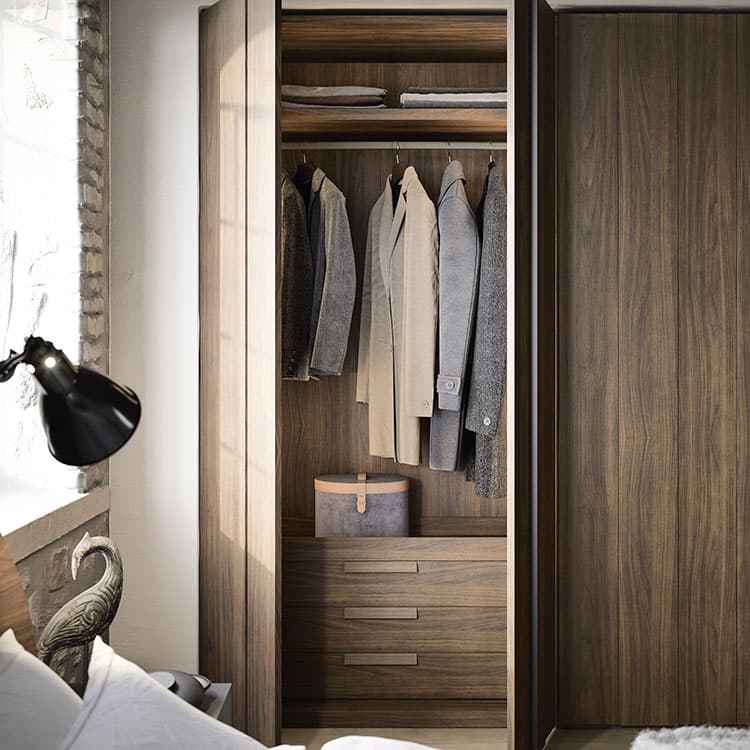
Key Takeaway: Material selection requires honest assessment of four critical factors: your actual budget (not aspirational), spatial constraints, realistic maintenance commitment, and wardrobe placement within your home. The best material choice emerges from balancing these practical considerations rather than pursuing abstract ideals of luxury or perfection.
The relationship between materials, finishes, and architectural context becomes rather clearer when examining actual projects. Here are several wardrobe solutions that demonstrate how material selection responds to specific design challenges.
For a Grade II listed property, we specified hand-painted solid oak with period-appropriate beading that honoured the 1880s architecture. The 22mm solid oak carcasses supported ornate cornice detailing without structural deflection, whilst internal drawers featured dovetailed cedar with leather liners, creating that subtle leather scent that distinguishes bespoke furniture from production pieces.
The exterior finish in Farrow & Ball Railings provided sophisticated near-black depth against original plasterwork. Soft-close mechanisms operated with whisper-quiet precision regardless of how vigorously doors closed at 6:30 am. The 4.2-metre run with bespoke internal configuration represented an investment of approximately £28,000.
A minimal contemporary space demanded maximum visual impact. High-gloss white lacquer on 18mm MDF provided the flawless, seamless finish contemporary design requires, enhanced with strategic bronze-tinted mirror inserts, not entire door surfaces, which can feel oppressive, but panels that reflected light whilst maintaining privacy.
In the compact 3.2m × 4m room, the reflective surfaces created a genuinely spacious perception. The lacquer required six coats for that deep, glass-like quality, with MDF providing the perfectly stable, knot-free substrate essential for high-gloss finishes. Investment: £18,500.
For a young family with three children under ten, American walnut veneer on birch ply carcasses balanced luxury aesthetics with genuine durability. Book-matched veneers created symmetrical grain patterns across the 5.8-metre wall, whilst leather-wrapped handles developed distinguished patina with use, actually improving rather than deteriorating.
Internal components used melamine-faced chipboard for hidden drawer boxes, allowing budget allocation toward visible surfaces and quality hardware. After three years of intensive family use, minimal wear beyond the intended leather patina. Investment: £15,200.
A 2.4m × 3.1m bedroom required wardrobes, maintaining spatial illusion whilst providing comprehensive storage. Full-height mirrored doors spanning one wall achieved this, specified with 6mm safety-backed premium float glass with proper edge sealing, essential where humidity fluctuates.
The frameless design extended seamlessly from floor to ceiling, functioning as a full-length dressing mirror and eliminating the need for additional mirrors in the compact space. Carcasses used moisture-resistant MR MDF rather than standard grade. Investment: £9,800.
Key Takeaway: Real projects demonstrate how material selection responds to specific architectural contexts and lifestyle requirements, from period oak in listed properties to high-gloss lacquer in contemporary spaces. These examples confirm that successful wardrobe design prioritizes appropriateness over trend, with material choices justified by performance rather than fashion.
Decision-making becomes remarkably more straightforward when armed with comprehensive information. As an initial step, I recommend identifying several local companies whose wardrobe showrooms you can visit. This allows you to examine their craftsmanship firsthand and obtain answers to your pertinent questions.
Consider asking:
Finally, request detailed quotations from each company for your shortlisted designs. These should comprehensively outline all costs involved from initial design through to final installation. At FCI, our dedicated built-in wardrobe department features wardrobe design specialists who will expertly guide you through each stage of the process.
Key Takeaway: Visiting showrooms to physically engage with materials and asking pointed questions about manufacturing, lead times, and warranties transforms abstract specifications into tangible understanding. This hands-on approach, combined with detailed quotations, ensures your material selection reflects genuine suitability rather than showroom impressions.
What is the most durable material for built-in wardrobe interiors?
For wardrobe interiors that withstand daily use, solid hardwoods like oak and walnut offer exceptional durability, though at a premium price point. A rather sensible alternative is high-quality melamine-faced MDF, which provides remarkable resistance to scratching and moisture at a more accessible investment level. For drawer interiors specifically, dovetailed solid wood construction represents the gold standard for longevity.
How do I choose between veneer and laminate finishes for my wardrobe?
This choice hinges on your priorities regarding authenticity versus practicality. Veneers offer the genuine character and warmth of real wood with unique grain patterns that create a truly luxurious appearance. Laminates, while lacking the natural variation of wood, provide superior resistance to moisture, scratching, and fading - making them refreshingly practical for family homes or rental properties where maintenance concerns might outweigh aesthetic considerations.
Are mirrored wardrobe doors practical for everyday use?
Mirrored doors are genuinely practical in smaller London bedrooms where they serve dual functions - storage and reflection - while visually expanding the space. However, they do require more frequent cleaning to maintain their appearance, and the quality of the mirror backing is crucial for longevity. We recommend opting for premium safety-backed mirrors with proper edge sealing to prevent deterioration, particularly in bathrooms or areas with fluctuating humidity levels.
What materials work best for wardrobes in period properties?
For period properties, materials that complement the architectural character are quite essential. Hand-painted solid wood or MDF wardrobes with traditional detailing work beautifully in Georgian, Victorian, and Edwardian homes. For Art Deco properties, consider veneers in exotic woods like macassar ebony or bird's eye maple with brass accents. The key is selecting materials that respect the property's heritage while incorporating modern functionality - a balance our period property specialists are rather adept at achieving.
Address & Hours:
FCI London, Rays House, North Circular Road, London, NW10 7XP
Monday - Saturday: 10am - 6pm
Sunday & Bank Holidays: 11am - 5pm
Contact Details:
Phone: +442081531235
Email: [email protected]
What to Bring:
The selection of wardrobe materials represents a significant investment that affects both immediate satisfaction and decades of daily performance. By understanding the genuine characteristics of each option and honestly assessing your lifestyle requirements, you create storage solutions that enhance rather than complicate your routines. Visit our London showroom to examine material samples firsthand and benefit from expert guidance that translates your requirements into bespoke solutions worthy of your home.
Dennis Smith
"I had a flawless experience from start to finish. I ordered a fitted wardrobe and bedside tables from FCI, and the staff were friendly, knowledgeable, and attentive. No pressure selling, just genuine help to achieve exactly what I wanted. The fitters were fast, clean, and professional. I negotiated a fair price and couldn’t be happier. Highly recommend FCI."
Sarj Patel
"Beautiful showroom and a pleasant surprise inside despite the modest exterior. The team was lovely, helpful, and patient as we explored a great selection of wardrobes and sofas. It’s not a budget store, but the quality speaks for itself. We’re really pleased with our sofa purchase and the excellent customer service. Thanks again, FCI, for a wonderful experience."
Ricardo Pollastri
"Our experience with FCI was fantastic from start to finish. We ordered built-in wardrobes and a home office setup, and everything was handled perfectly. Irina was experienced, creative, and helpful with design ideas, while the installation team was skilled and professional. The craftsmanship is excellent, great value for money, and built to last. We couldn’t be happier with FCI."
Get In Touch
Book A Video Chat
Book a video consultation and we'll advise you on furniture, space planning, colour schemes and much more.
Book A ConsultationVisit Our Showroom
Book a visit to our stunning, multi award-winning, 30,000 sqft.
Over 700 brands under 1 roof.
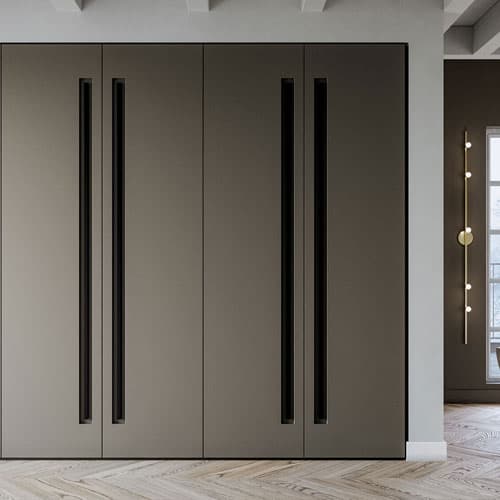
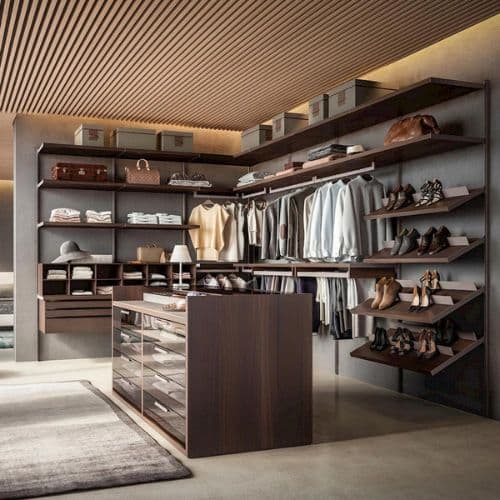
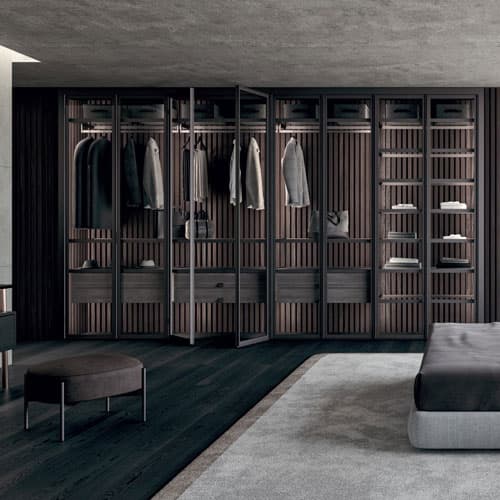
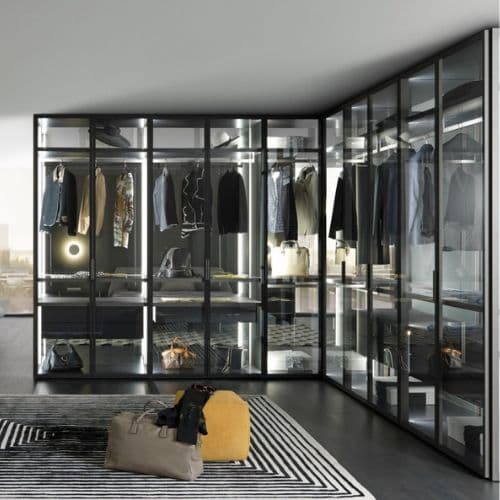
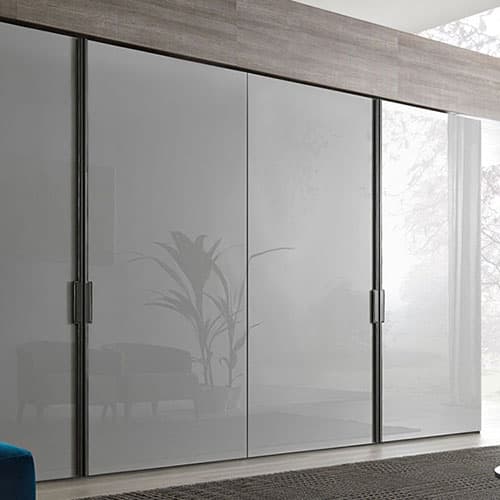
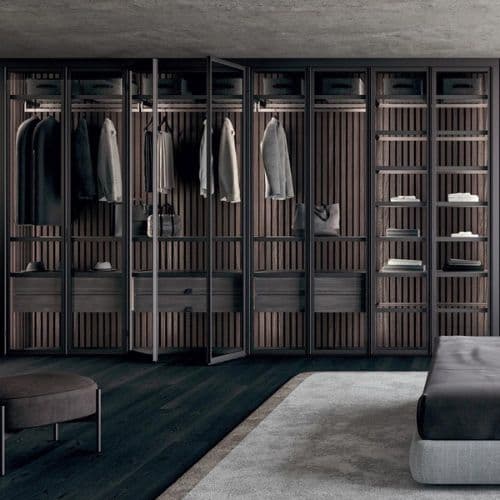
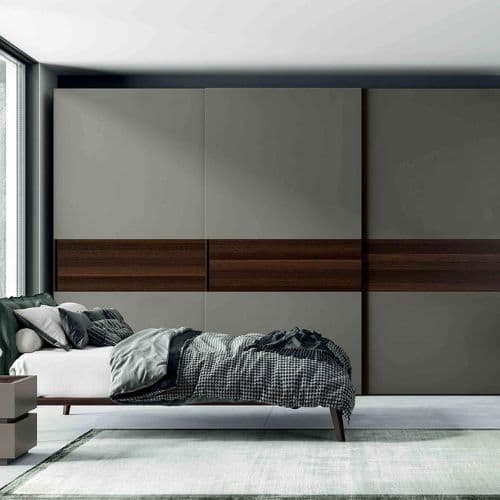
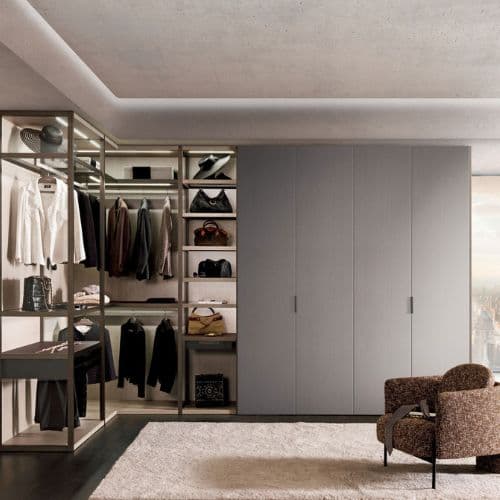
Most Popular on FCI London: Fitted Wardrobes | Luxury Designer Rugs | Luxury Sofas | Luxury Furniture Store | Luxury Interior Designers | Luxury Bedroom Furniture | Luxury Modern Chairs | Luxury Coffee Tables | Luxury Designer Kitchens | Luxury TV Units | Luxury Dining Tables | Luxury Storage Solutions | Luxury Sideboards | Luxury Stools & Bar Stools
Transparency isn’t a policy. It’s a principle.
Have a peek at what our clients really have to say.
